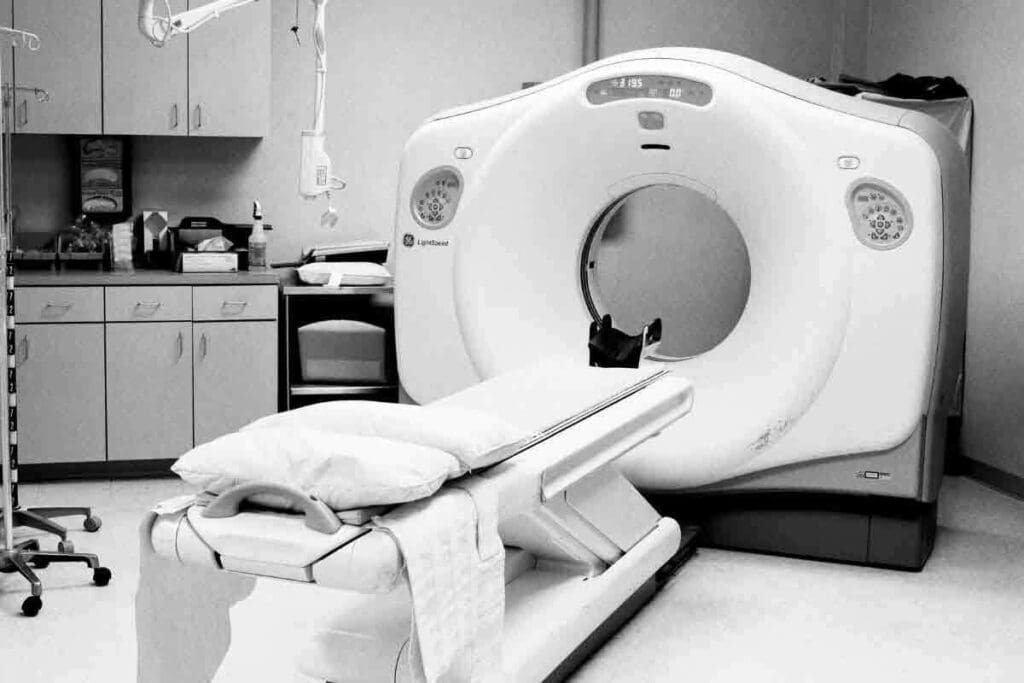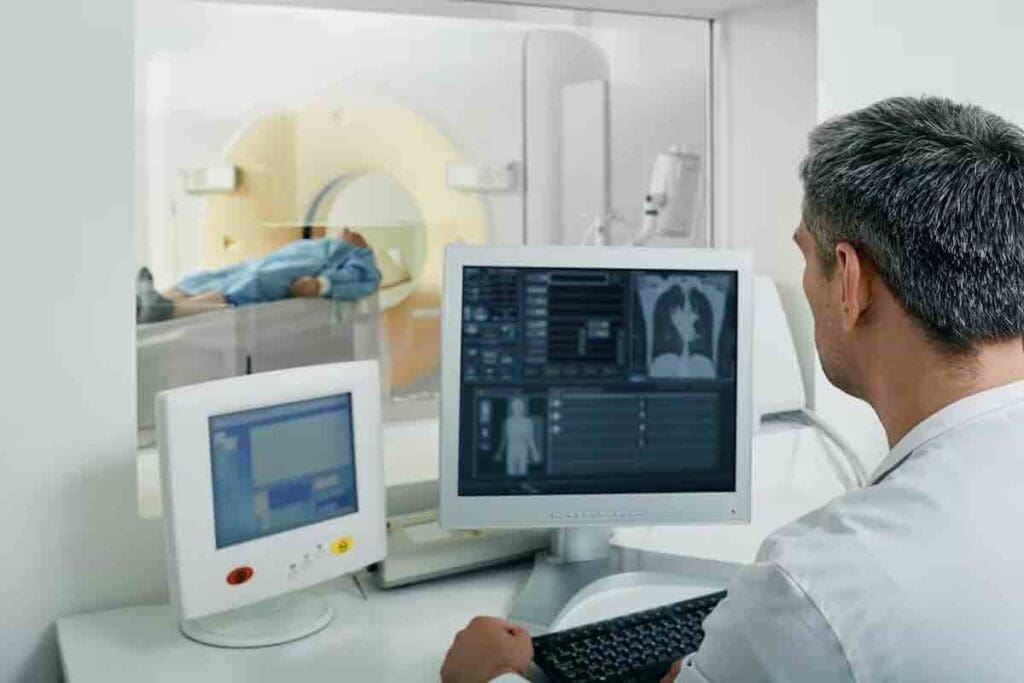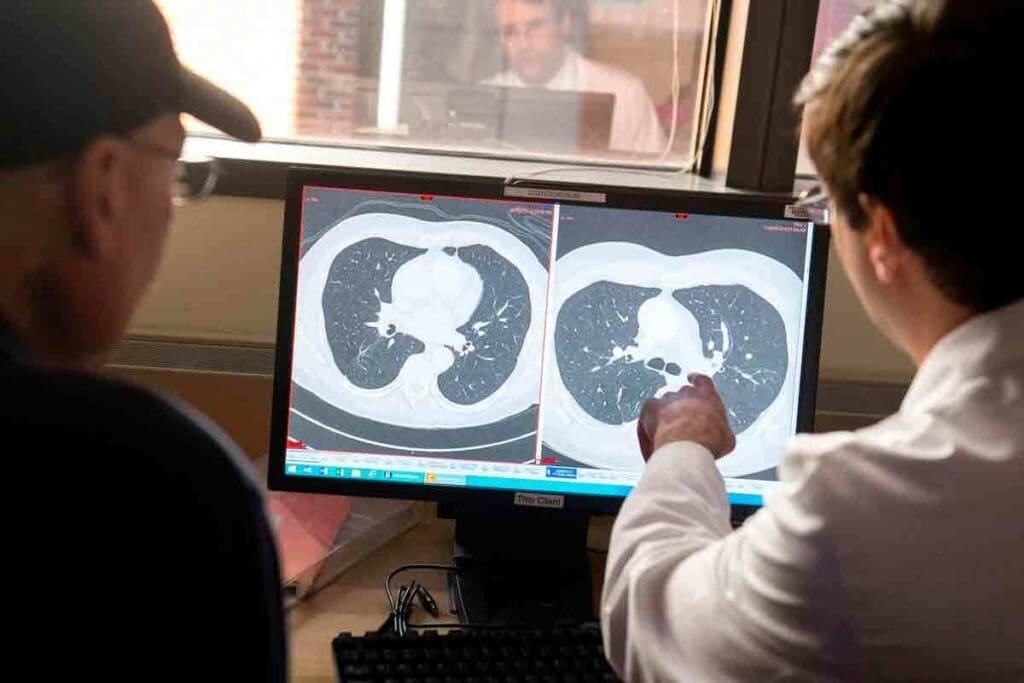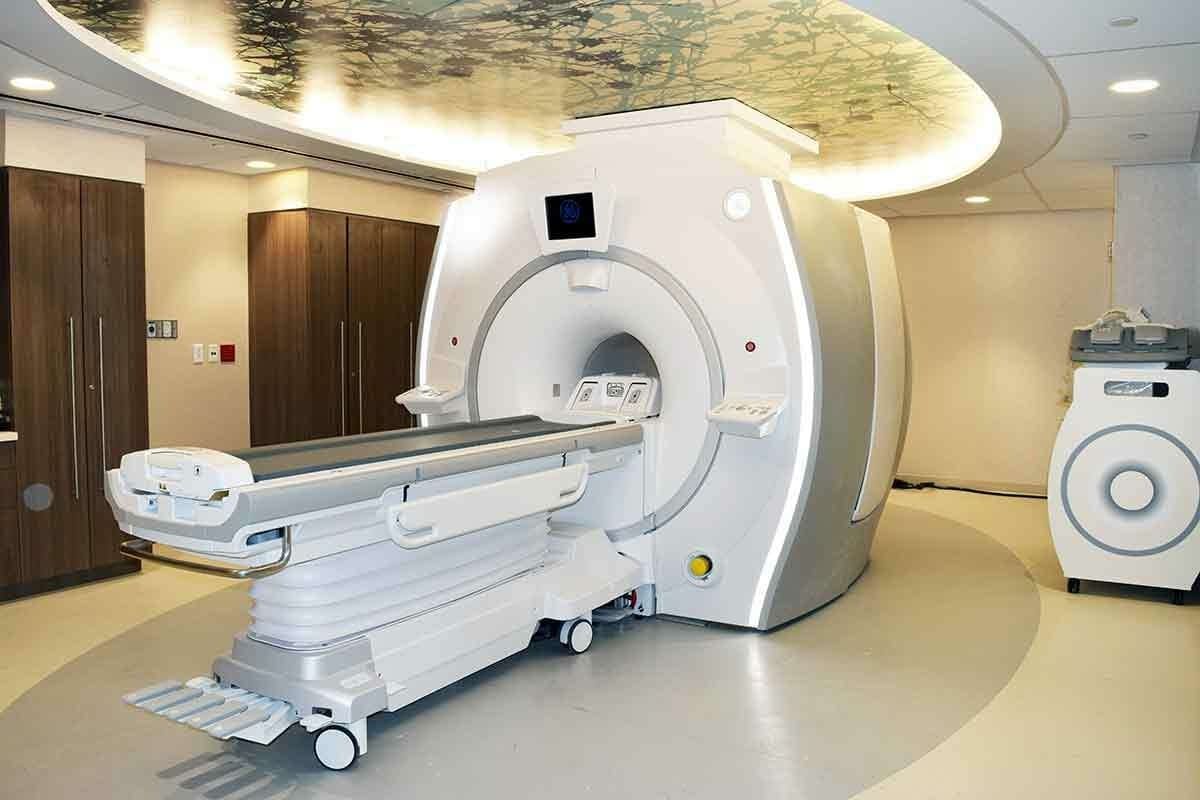Last Updated on November 27, 2025 by Bilal Hasdemir

Positron Emission Tomography (PET) scans are key in finding and managing cancer. At Liv Hospital, we know how important it is to determine how often can you get a pet scan, as timing plays a vital role in ensuring the best care for cancer patients. The frequency and scheduling of PET scans depend on the cancer type, stage, treatment plans, and individual patient needs.
PET scan frequency is very important for cancer patients. It affects their treatment and how well they do. Our team looks at each scan carefully. We balance getting the right info with keeping radiation exposure low.
Key Takeaways
- PET scans are vital for diagnosing and monitoring cancer.
- The frequency of PET scans varies based on the type and stage of cancer.
- Clinical guidelines and medical necessity determine the appropriate PET scan frequency.
- Liv Hospital prioritizes patient safety and effective care in PET scan administration.
- Personalized treatment plans are developed based on individual patient needs and scan results.
Understanding PET Scans and Their Purpose

PET scans are special in medical imaging. They show how cells and tissues work. This is key for finding and treating many health issues, like cancer.
A PET scan uses a radiotracer, a mildly radioactive liquid. It highlights areas where cells are more active than usual. This is important because many diseases, like cancer, make cells work harder.
What Is a PET Scan?
A PET (Positron Emission Tomography) scan is a special imaging test. It helps doctors see how different body parts work. Unlike other tests, PET scans focus on how cells and tissues work, not just their structure.
How PET Scans Differ from Other Imaging Tests
PET scans are different from CT scans or MRI. They look at how cells work, not just their structure. CT scans and MRI show body parts, but PET scans show how they function at a cellular level.
This is very important for diagnosing and treating diseases. For example, in cancer, a PET scan can spot cancer cells before they cause big changes in the body.
The Role of Radiotracers in PET Imaging
The radiotracer is a key part of PET scans. It’s a tiny bit of radioactive stuff attached to a molecule. This molecule is taken up by cells in the body.
The most used radiotracer is FDG (fluorodeoxyglucose). It’s taken up by cells based on how much glucose they use. Cancer cells use more glucose than normal cells, so they show up as “hot spots” on the scan.
But, it’s important to remember that not all hot spots mean cancer. Other conditions can also make cells work harder.
Knowing how PET scans work helps patients and doctors make better choices about treatment.
Medical Conditions That Require PET Scans

PET scans help diagnose many medical conditions. They give doctors important information. This helps them make better decisions for their patients.
Cancer Diagnosis and Monitoring
PET scans are key in fighting cancer. They show how far cancer has spread and if treatments are working. For example, cancer patients might get PET scans every 2 to 6 months.
PET scans have changed how we manage cancer. They show how active tumors are. This helps doctors create the best treatment plans for each patient.
| Cancer Type | PET Scan Application | Frequency |
| Lung Cancer | Initial staging, treatment response assessment | Every 3-6 months |
| Lymphoma | Disease monitoring, treatment response | Every 2-3 months |
| Colorectal Cancer | Recurrence detection, treatment monitoring | Every 6-12 months |
Neurological Conditions
PET scans are also vital for brain health. They help find problems in the brain. This includes diseases like Alzheimer’s and Parkinson’s.
These scans help doctors understand brain diseases. This knowledge helps them make better treatment plans. It improves how patients are cared for.
Cardiac Applications
PET scans are also used for heart health. They check how well the heart works. This helps find heart disease and predict future heart problems.
Using PET scans in cardiology gives doctors important insights. They can create better treatment plans. This improves care for heart patients.
How Often Can You Get a PET Scan: General Guidelines
Deciding how often to get a PET scan depends on several important factors. These include medical need and clinical guidelines. We will dive into these details to help you understand PET scan frequency better.
Standard Recommendations for Scan Frequency
How often you should get a PET scan varies with your medical condition. For cancer patients, the scan frequency depends on the cancer type and stage, and the treatment plan. PET scans are used at different stages, like diagnosis, during treatment, and after it to check for recurrence.
For aggressive cancers, scans might be needed more often to track the disease. But for less aggressive cancers or those in remission, scans could be less frequent.
Factors That Influence Scanning Schedules
Several things affect when you should get a PET scan. These include your health, the disease specifics, and how you’re responding to treatment. Clinical guidelines and professional society recommendations also play a big role.
Other factors like PET scan availability, insurance, and personal preferences also matter. It’s key to talk with your doctor to find the best scan schedule for you.
Insurance Coverage Considerations
Insurance coverage is a big deal when it comes to PET scans. Different insurers have different rules about covering PET scans. These rules can affect how often you can get a scan.
Here’s a table to show how factors like cancer type and insurance coverage can affect PET scan frequency:
| Factor | Influence on PET Scan Frequency | Insurance Coverage Consideration |
| Type and Stage of Cancer | More aggressive cancers may require more frequent scans. | Insurance may cover more frequent scans for aggressive cancers. |
| Treatment Response | Scans are used to assess how well the treatment is working. | Insurance coverage may be influenced by the need to assess treatment response. |
| Clinical Guidelines | Guidelines recommend scan frequencies based on best practices. | Insurance providers often follow clinical guidelines for coverage. |
Understanding these factors is key for both patients and healthcare providers. It helps make informed decisions about PET scan frequency.
PET Scan Frequency for Different Cancer Types
Different cancers need different PET scan frequencies. This depends on the type of tumor and how well it responds to treatment. We’ll look at how PET scans help manage various cancers, focusing on how often and why they’re used.
Lung Cancer Monitoring Protocols
Lung cancer is a common cancer where PET scans are key. PET scans are very useful for lung cancer, helping to stage, guide treatment, and find metastases. Lung cancer patients often get PET scans at diagnosis to see how far the disease has spread. They also get scans after treatment to check if it worked.
The timing of PET scans for lung cancer varies. But they’re usually used during treatment. Guidelines suggest lung cancer patients might get PET scans every few months. The exact timing depends on the doctor and how well the patient is responding to treatment.
Lymphoma and Leukemia Surveillance
PET scans are also important for lymphoma and leukemia. They help doctors see if treatment is working and make changes if needed. For lymphoma and leukemia, PET scans are often done more frequently at the start of treatment.
After a few rounds of chemotherapy, scans check how well the disease is responding. As treatment goes on, scans might not be as frequent. But they’re key for watching these cancers over time. For more on PET scans in lymphoma, check out the National Center for Biotechnology Information.
Colorectal and Other Solid Tumors
Colorectal and other solid tumors also benefit from PET scans. They help check for metastases and see how well treatment is working. The timing of PET scans for these cancers depends on the stage and treatment plan.
For example, advanced colorectal cancer might need regular PET scans to track disease and treatment. Early-stage disease might have fewer scans, with other tests like CT scans and colonoscopy used more. The choice of PET scans is based on each patient’s situation, balancing monitoring needs with risks and costs.
PET Scan and Lung Cancer: Special Considerations
PET scans have changed how we fight lung cancer. They help doctors see how far the disease has spread and if treatments are working.
Initial Staging and Diagnosis
PET scans are key in lung cancer diagnosis and staging. They show if the cancer has spread to lymph nodes or other areas. This info is vital for planning treatment.
PET scans help spot the main tumor, check lymph nodes, and find distant metastases. This detailed look helps doctors accurately stage the cancer. Knowing the stage is key to choosing the right treatment.
Treatment Response Assessment
Monitoring how well treatments work is another big role for PET scans in lung cancer. They show if the treatment is making the tumor smaller or less active. This helps doctors adjust treatments if needed.
PET scans are great for checking how well chemotherapy, radiation, or targeted therapy work. They show if the tumor is getting smaller or less active. This is a big sign of treatment success.
Recurrence Detection
PET scans are also important for catching lung cancer that comes back after treatment. Regular scans can spot early signs of recurrence. This means doctors can act fast and possibly improve treatment results.
With PET scans, doctors can quickly see if the tumor’s activity is changing. This means they can start new treatments or interventions right away.
Stage 4 Cancer and PET Scan Monitoring
PET scans are key in managing stage 4 cancer. They help track the disease’s spread. For stage 4 cancer patients, knowing how far the disease has spread is vital. This information helps plan the best treatment.
PET scans show how active tumors are. This is important for seeing how the disease is growing.
Tracking Metastatic Disease
In stage 4 cancer, the disease spreads to distant parts of the body. This is called metastasis. PET scans are great at finding and watching these distant sites.
They show where the disease is most active. This helps doctors see how far the disease has spread. It also helps find the best places to treat it.
Key benefits of PET scans in tracking metastatic disease include:
- Early detection of new metastatic sites
- Monitoring the response of metastatic sites to treatment
- Guiding biopsies and other interventions
Evaluating Treatment Efficacy
PET scans also check if treatment is working. By comparing scans before and after treatment, doctors see if tumors are shrinking. This helps decide if treatment should keep going or change.
| Treatment Outcome | PET Scan Findings | Clinical Implication |
| Effective Treatment | Reduced metabolic activity | Continue current treatment |
| Ineffective Treatment | No change or increased metabolic activity | Consider alternative treatments |
End-of-Life Care Considerations
PET scans also help in planning end-of-life care for stage 4 cancer patients. They give a clear view of the disease’s spread. This helps in making decisions about care focus.
In some cases, PET scans help talk about switching to palliative care. This care focuses on managing symptoms and improving quality of life.
The compassionate care of stage 4 cancer patients involves not only effective treatment but also emotional and psychological support. Understanding PET scans’ role helps patients and doctors create a care plan. This plan covers all the patient’s needs.
Radiation Exposure: How Many PET Scans Can You Have in a Lifetime?
The buildup of radiation from PET scans is a big concern in cancer treatment. We use PET scans to find and track cancer. It’s important to know the risks of radiation exposure.
Cumulative Radiation Risks
PET scans give off radiation, and getting many scans can be risky, mainly for young people. The more scans you have, the higher your chance of getting a second cancer. We need to think about the good and bad of PET scans.
Cumulative Radiation Dose: The total dose from many PET scans can be a lot. For example, one scan gives about 7 millisieverts (mSv) of radiation. While it’s like some other tests, too many scans can add up and be a concern.
Comparing PET Scan Radiation to Other Sources
It helps to compare PET scan radiation to other things. We can look at natural background radiation, flying, and other medical tests.
| Source | Radiation Dose (mSv) |
| PET Scan | 7 |
| Chest X-ray | 0.1 |
| CT Scan (Abdomen) | 10 |
| Flight from New York to Los Angeles | 0.1 |
| Background Radiation (Annual) | 2.4 |
Balancing Diagnostic Benefits Against Radiation Exposure
It’s key to avoid scans we don’t need because of radiation risks. We must weigh the good of PET scans against the risks. This means planning carefully and choosing other tests when we can.
Clinical judgment is very important in choosing when and how often to use PET scans. Doctors should think about the patient’s health, the scan’s benefits, and the risks. This helps make sure patients get the best care with less radiation.
Knowing the risks and benefits helps us use PET scans wisely in cancer treatment. This way, we can help patients get the care they need while keeping radiation exposure low.
Interpreting PET Scan Results: Accuracy and Limitations
PET scan results need careful analysis. They show both accuracy and limitations. Understanding these results is key to patient care. It affects diagnosis, treatment, and managing health issues.
What Percentage of PET Scans Are Positive for Cancer?
Not every positive PET scan means cancer. Research shows that only 50 to 70 percent are cancerous. This highlights the need to know the full story behind PET scan results.
“The accuracy of PET scans in detecting cancer depends on several factors, including the type of cancer, the stage of the disease, and the specific radiotracer used,” emphasizes the need for careful interpretation.
False Positives and Their Causes
False positives in PET scans can happen for many reasons. These include inflammation, infection, or other non-cancerous issues. For example, a PET scan might show activity in inflamed areas, which can look like cancer.
- Inflammatory processes
- Infectious diseases
- Other non-malignant conditions
Knowing why false positives occur is key for correct diagnosis and treatment.
The Importance of Clinical Correlation
Clinical correlation is vital when looking at PET scan results. It involves looking at the patient’s history, symptoms, and other tests along with the PET scan.
Accurate interpretation requires a complete approach. This means combining PET scan data with other clinical information for the best diagnosis and treatment.
“Clinical correlation is vital to accurately interpret PET scan results and make informed decisions about patient care.”
-Radiologists emphasize.
By linking PET scan results with clinical correlation, doctors can improve diagnosis accuracy. This leads to better treatment plans for patients.
Why Are PET Scans So Expensive?
PET scans are pricey, and it’s important to know why. The cost comes from making radiotracers, the equipment needed, and the specialized staff required. These elements all play a part in the final price.
Radiotracer Production Costs
Making radiotracers is a complex and expensive task. These compounds help doctors see how the body works. The process uses advanced tech and strict safety rules to handle radioactive materials.
Nuclear imaging experts explain, “Creating radiotracers needs a controlled space and strict safety rules. This increases the cost.”
The price of radiotracers changes based on the type and amount needed. For example, Fluorodeoxyglucose (FDG) is often used. Its production requires a cyclotron, which is costly to buy and keep up.
Equipment and Facility Expenses
PET scan equipment is top-notch and pricey. The PET scanner itself is a big investment for hospitals. The facility also needs to be safe for the scanner and radioactive materials.
- A PET scanner can cost between $1 million and $3 million.
- Keeping the scanner running costs over $100,000 a year.
- Changing the facility to fit the scanner adds hundreds of thousands of dollars.
Specialized Personnel Requirements
Running a PET scanner and reading its images need skilled people. This includes radiologists, nuclear medicine technologists, and medical physicists. Training these experts takes time and money.
The Society of Nuclear Medicine and Molecular Imaging says, “PET imaging is complex. It needs a lot of skill, which raises personnel costs.” Keeping up with new tech and methods also adds to the cost.
“The high cost of PET scans reflects the complexity of the technology and the expertise required to perform and interpret the scans.”
— Nuclear Medicine Specialists highlight.
In summary, PET scans are expensive due to several reasons. These include the cost of making radiotracers, the price of equipment and facilities, and the need for skilled staff. Knowing these factors helps patients and healthcare providers make better choices about using PET scans.
Potential Risks and Dangers of PET Scans
It’s important to know the risks of PET scans. They are a key tool for doctors but come with some dangers. These include radiation and other risks that need careful thought.
Short-Term Side Effects
PET scans are usually okay, but some people might feel a bit off. You might get:
- Allergic reactions to the radiotracer, though this is rare
- Discomfort or pain at the injection site
- Claustrophobia or anxiety during the scan
Most of these effects are mild and don’t last long. But, it’s key to tell your doctor about any worries or health issues before the scan.
Long-Term Radiation Concerns
One big risk of PET scans is radiation. The tracer used in scans can raise cancer risk over time. But the scan’s benefits often outweigh this risk, which is why doctors use them.
| Radiation Exposure Comparison | Effective Dose (mSv) |
| Average annual background radiation | 2.4 |
| Typical PET scan | 5-10 |
| Chest CT scan | 7-10 |
The table shows PET scans have similar radiation to other scans. The scan’s benefits, like helping find cancer, are often more important than the risks.
“The risk of radiation-induced cancer from a single PET scan is generally considered to be low, but it’s a factor to consider when deciding on the frequency of PET scans.”
—A leading Nuclear Medicine Specialist notes.
Special Considerations for Pregnant Women and Children
Pregnant women and kids need extra care with PET scans. The scan’s radiation can harm the growing fetus or child.
Pregnant Women: Doctors usually avoid PET scans during pregnancy unless it’s really needed. If a scan is needed, they try to keep the fetus’s radiation exposure low.
Children: Kids are more sensitive to radiation. So, doctors carefully decide if a PET scan is needed. If it is, they use a smaller dose and try to keep exposure low.
Choosing to have a PET scan is a big decision. Knowing the risks and benefits helps patients and doctors make the best choice for everyone’s safety.
Alternatives to Frequent PET Scanning
When frequent PET scans aren’t the best option, doctors look at other ways to check on patients. PET scans are great for spotting and tracking diseases, but they’re not for everyone. We’ll look at other methods that can help, cut down on PET scans, and improve care.
Other Imaging Modalities
CT and MRI scans give detailed views of the body without needing PET’s special tracers. CT scans are great for seeing structural changes. MRI scans show soft tissues well. These can work alone or with PET scans to give a full picture of a patient’s health.
For example, CT scans can watch tumor size in some cancers, maybe cutting down PET scan use. MRI is good for soft tissue diseases, like some brain conditions.
Blood-Based Biomarkers
Blood tests are another way to check on health without PET scans. They tell us about disease activity, how treatments are working, and if cancer might come back. For instance, blood tests track certain cancers, like prostate cancer with PSA.
These blood tests are great for long-term checks, as they lower radiation risks from PET scans. They can also be checked more often, helping doctors adjust treatments sooner.
Clinical Assessment Strategies
Doctors also use patient history, physical checks, and symptom tracking as alternatives. Regular checks can sometimes skip the need for frequent scans when a patient’s condition is stable or improving.
Also, these assessments help decide when to use PET scans. This way, scans are used only when they really help in managing a patient’s care. It’s about finding the right balance between scan benefits and risks.
Conclusion: Making Informed Decisions About PET Scan Frequency
We’ve looked at what affects PET scan frequency and the good and bad sides of PET scans. Knowing this helps patients make smart choices about their health. It’s key to talk to doctors to find the right PET scan schedule for each person.
PET scans aren’t the same for everyone. The type and stage of cancer decide how often scans are needed. We must think about each patient’s health, treatment, and medical history.
Patients should talk to their doctors about PET scan frequency. This teamwork helps ensure patients get the right care without too many risks. This way, patients can feel sure they’re getting the best care for them.
The main aim is to find a balance between getting useful scans and avoiding risks. Working with doctors, patients can choose the right PET scan schedule. This ensures they get care that fits their specific needs.
FAQ
How often can you get a PET scan for cancer monitoring?
The frequency of PET scans for cancer monitoring depends on several factors. These include the type of cancer, the treatment plan, and the patient’s needs. We work closely with healthcare providers to find the best scanning schedule for each patient.
What is a PET scan, and how does it work?
A PET scan is a medical imaging test. It uses a radiotracer to see how active cells are in the body. This helps doctors diagnose and monitor conditions like cancer, neurological disorders, and heart diseases.
How many PET scans can you have in a year?
The number of PET scans allowed per year varies. It depends on the patient’s medical needs and insurance coverage. We follow guidelines to ensure accurate diagnoses while minimizing radiation exposure.
Why are PET scans so expensive?
PET scans are expensive due to several factors. These include the cost of making radiotracers, the price of equipment, and the need for specialized staff. We aim to make PET scans accessible to those who need them, despite these costs.
What percentage of PET scans are positive for cancer?
The percentage of PET scans positive for cancer varies. It depends on the patient population, the type of cancer, and the scanning protocols. We interpret each scan in the context of the patient’s data and medical history.
Can PET scans detect lung cancer?
Yes, PET scans can detect and monitor lung cancer. They help with staging, assessing treatment response, and detecting recurrence. We use them along with other diagnostic tools for a complete care approach.
How often can you get a PET scan for stage 4 cancer?
For stage 4 cancer, the frequency of PET scans depends on the treatment plan, disease progression, and symptom management. We work with healthcare providers to tailor scanning schedules to meet individual patient needs.
What are the dangers of PET scans?
PET scans involve radiation exposure, which can pose long-term risks. We weigh the benefits of diagnostic scans against the risks of radiation. When possible, we consider alternative imaging options.
Are there alternatives to frequent PET scanning?
Yes, there are alternatives to frequent PET scanning. These include other imaging modalities, blood-based biomarkers, and clinical assessment strategies. We explore these options to reduce radiation exposure and improve patient care.
How do PET scans compare to other imaging tests?
PET scans are unique because they show metabolic activity. They provide information that complements anatomical imaging, like CT or MRI scans. This helps guide diagnosis and treatment.
What are the risks associated with radiation exposure from PET scans?
Radiation exposure from PET scans carries risks, including long-term effects. We consider these risks when deciding on scanning schedules. We also look for ways to minimize exposure.
Can PET scans be used for neurological conditions?
Yes, PET scans are used for neurological conditions like Alzheimer’s disease and certain seizure disorders. They help understand disease progression and guide treatment plans.
How do PET scans help in cardiac applications?
PET scans are used in cardiac applications to assess heart viability, diagnose coronary artery disease, and evaluate heart function. They provide valuable information for cardiovascular care.
References
- Herscovitch, P., & Delbeke, D. (2022). Regulatory agencies and PET/CT imaging in the clinic. PMC. https://www.ncbi.nlm.nih.gov/pmc/articles/PMC9340745/






